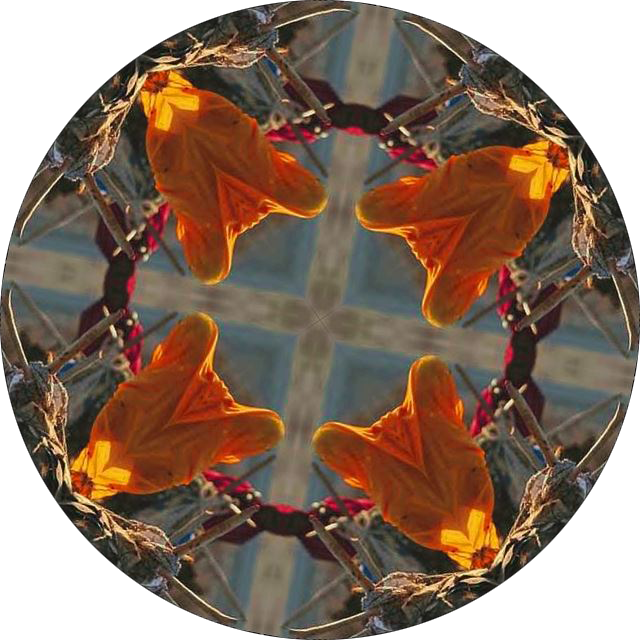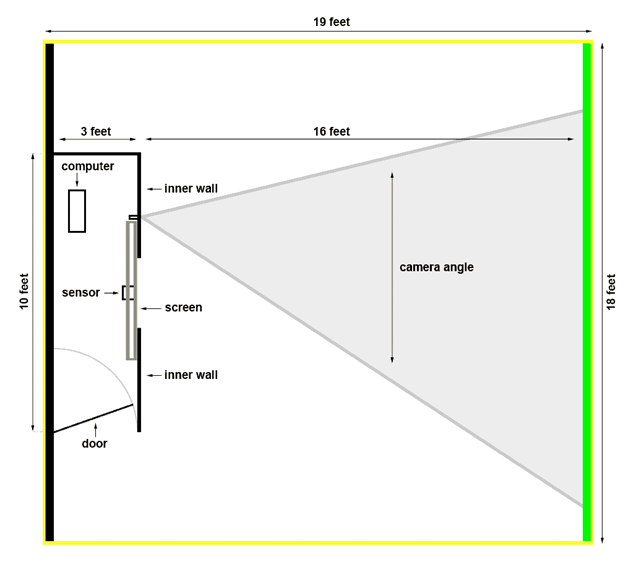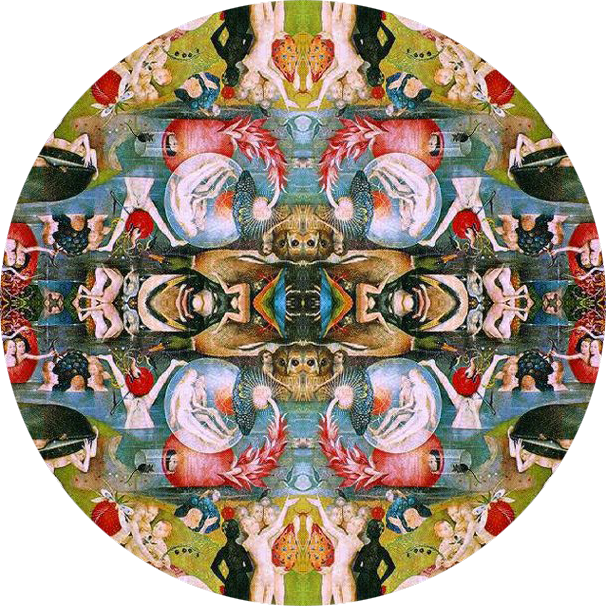human^n (‘human to the power of n‘) is an interactive ‘walk-in kaleidoscope’ by Carmin Karasic & Rolf van Gelder

Description
Kaleidoscopes use mirrors and objects to create mesmerizing reflections. Any arbitrary set of objects shows up as beautiful symmetries. Via video capture, people who view this artwork become objects whose movements transform any image of humanity.
The human^n kaleidoscope installation allows the viewer to literally put a spin on visions of humanity. By mixing live video of the viewer with imagery representing various aspects of humanity, the wide gap separating us from the impacts of our choices is eliminated. This artwork samples and re-mixes us to encourage reflection on our role in the world. Juxtaposed as such, we are no longer invisible players in world events.
The viewer’s movements spin and zoom the kaleidoscope. Moving toward the screen will zoom in on the image. Moving away will zoom out. Moving to the left will spin the kaleidoscope counterclockwise and to the right; clockwise. Speed will be linked to movement speed.

Technical Description
This artwork will require a space of about 19 x 18 feet (5.8 x 5.5 meters). This includes a small equipment access area that hides the computer, screen, sensor, etc. A SICK LMS200 infrared laser sensor will be used to track visitors’ movements. A computer will use the movement data to control the kaleidoscope. The kaleidoscope image will be displayed on a large plasma HDTV screen (minimum 61″ diagonal display). The plasma screen will be mounted behind an inner wall with a large hole in it, to create a circular mask for the kaleidoscope screen. A hidden video camera will be mounted on the same wall. The opposite wall (green wall in the diagram above) will be painted to create a ‘blue screen’ effect. The ‘blue screen’ wall needs to be a minimum height of 7 feet (2.2 meters) high.
This kaleidoscopic artwork has 2 image components: the background and the viewer.
The background is a mandala generated from a random image representing some aspect of human nature, for example a soldier in Baghdad, or a diamond ring. These images change at set time intervals.
As the viewer enters the space, they see the static kaleidoscopic background image and hear subtle sounds. As soon as the proximity sensor detects their presence, the image spins or zooms based on their movement. While they are in the camera range, the kaleidoscope software samples their live video image and mixes it with the background image real-time. The viewer should be able to recognize fragments of their self or their clothing mixed with identifiable elements of the background image, such as a soldier.

Recognitions
- Selected for the finals of the Frits Philips Light-Art Contest 2008
- Selected for the finals of the Rhizome Commissions 2009
Exhibitions
- April 17 – September 8, 2009: Museum of Science, Boston, MA, USA
- September 27, 2008 – January 25, 2009: Museum Kunstlicht In De Kunst, Eindhoven, NL
Links

